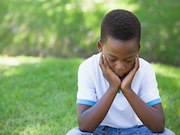Most common class got psychotherapy monotherapy, and had lowest incidence of attempted suicide
MONDAY, Nov. 20, 2017 (HealthDay News) — For youths with depression, there are distinct treatment trajectories, which have varying health outcomes, according to a study published online Nov. 20 in JAMA Pediatrics.
Nina R. Joyce, Ph.D., from Harvard Medical School in Boston, and colleagues conducted a longitudinal cohort study of youths aged 18 years or younger with a new diagnosis of depression and at least 12 months of follow-up from diagnosis. The authors used latent class models fit to summary measures of psychotherapy and antidepressant use in the 12 months after diagnosis. Data were included for 84,909 individuals with a mean age of 15.0 at index diagnosis.
The researchers found that 70 percent of individuals received psychotherapy at any point during the assessment period, and 40 percent were dispensed antidepressants. There were eight classes identified with distinct treatment trajectories, which were classified into four groups: three classes received dual therapy (22 percent), two received antidepressant monotherapy (18 percent), two received psychotherapy monotherapy (48 percent), and one class received no treatment (13 percent). The most common class received psychotherapy monotherapy; during the assessment and post-assessment periods they had the lowest incidence of attempted suicide and inpatient hospitalizations. The highest incidence of attempted suicide during the assessment period and post-assessment period was seen for the group receiving dual therapy.
“In our sample, 13 percent of youths received no treatment, and 18 percent received antidepressants without concomitant psychotherapy,” the authors write.
Copyright © 2017 HealthDay. All rights reserved.








